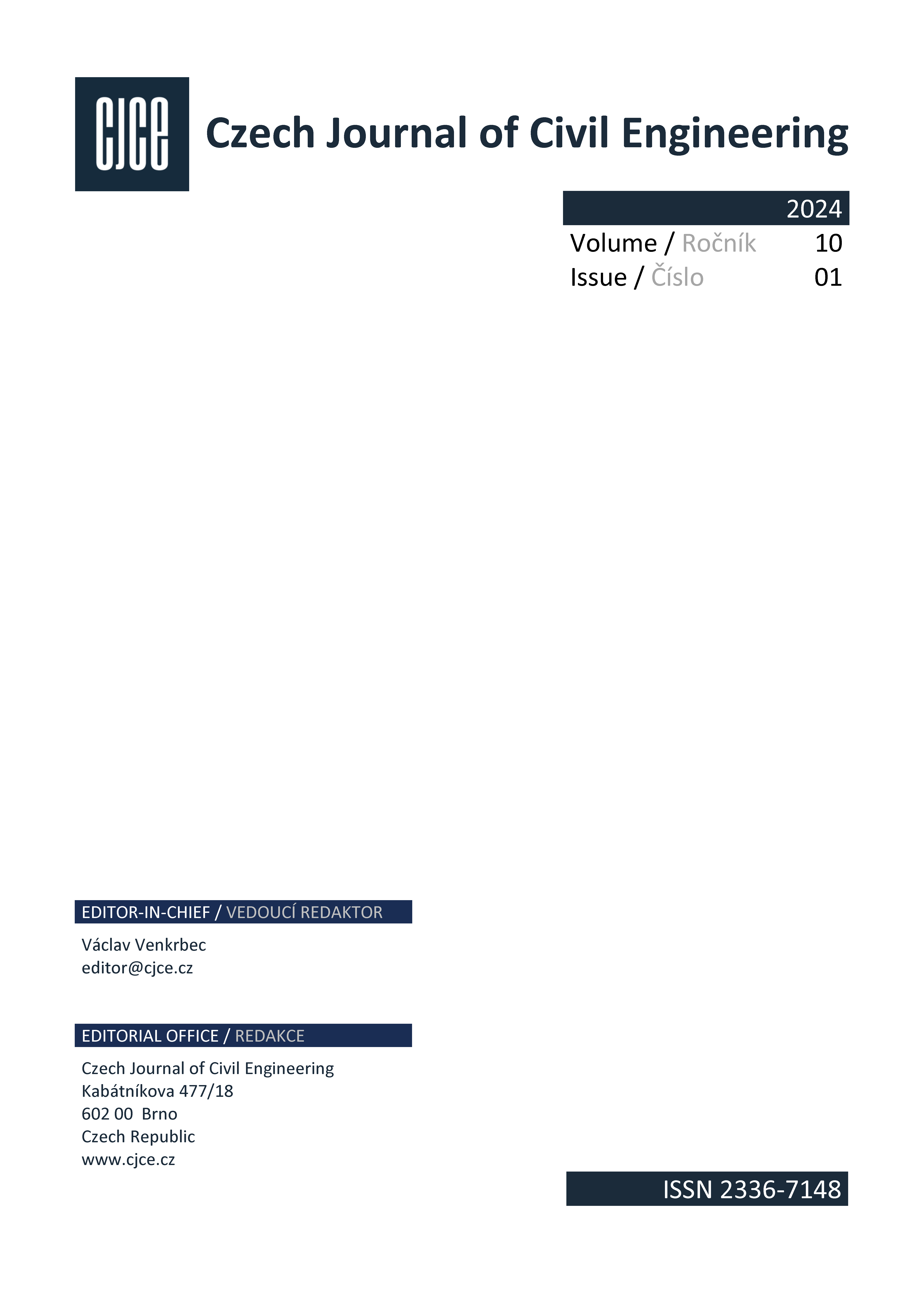Methodical Conflict among the Ways for Drying out of Historic Masonry
DOI:
https://doi.org/10.51704/cjce.2024.vol10.iss1.pp34-42Klíčová slova:
Moisture, masonry, architectural heritage, ventilation, undercutting, injectionAbstrakt
The purpose of this paper is to give a focus on evaluation of effectiveness of technologies aimed on remedy of unwanted moisture in masonry constructions of historic architectural heritage buildings standing under architectural heritage protection. There are many ways how to achieve the wonted state of the constructions, but some of them are quite invasive, some are not that much invasive and some of them are doubtful. The usual resistance of a group of officers of Heritage authorities to invasive technologies makes the practise complicated, as the, so called invasive technologies are usually the most effective. Officers usually welcome not that much invasive technologies and a special place in their understanding of this problem is held by the Method of Sequential Steps. This method is based on step by step introduced ways of solving of the problem, which should start with minimal interventions and continue towards more intervening interventions. This approach might be relatively sensitive to the structures, but it takes a lot of time and a success is not ensured.
##plugins.generic.paperbuzz.metrics##
Reference
ASHURST, J. & ASHURST, N. (1989). Practical Building Conservation. - Vol. 2. Brick, Terracotta and Earth, Hants: English Heritage Technical Handbook, Gower Technical Press.
BALÍK, M. & MAKÝŠ, O. (2023). Vlhnutie objektov, soli a sanácia vlhkosti a biodegradácia (riasy, machy, huby), sanácia. 1. vyd. Bratislava: Pamiatkový úrad SR, B. Metodika princípov rozhodovania Pamiatkového úradu SR vo veciach stavebnotechnického /alebo reštaurátorského/ zásahu, časť 10. Údržba a preventívna ochrana. Dostupné z: https://www.pamiatky.sk/plan-obnovy-a-odolnosti
BALÍK, M. & STARÝ, J. (2003). Sklepy - opravy a rekonstrukce. Praha: Grada Publishing, s. 110. ISBN 80-247-0221-5.
BALÍK, M. (1997). Vysušování zdiva 2. Praha: Grada Publishing.
BALÍK, M. (1999). Vysušování zdiva 1. Praha: Grada Publishing, 80 s. ISBN 80-247-0438-2.
BALÍK, M. (1999). Vysušování zdiva 3. Praha: Grada Publishing.
BRANSON, G. (2003). Home Water and Moisture Problems: Prevention and Solutions. Richmond Hill: Firefly Books. 144 s. ISBN 1552978354.
KLOTZ-WARISLOHNER, G. & SAAR, M. (1999). Reparatur in der Baudenkmalpflege, München Bayerisches Landesamt für Denkmalpflege. 164 s. ISBN: 978-3874906982.
LEBEDA, J. a kol. (1998). Sanace zavlhlého zdiva. Praha: SNTL.
LEITNER, H. (1996). Stabilization of architectural surfaces. In: Poznámky k prednáške na kurze ICCROM ASC-96: The Examination and Conservation of Architectural Surfaces, Viedeň – Mauerbach.
MAKÝŠ, O. & NÉMETH, A. (2017). Renovácia omietok. 1. vyd. Pezinok: Renesans. ISBN 978-80-89402-96-0.
MAKÝŠ, O. (2000). Rekonštrukcie stavieb – technológie. Bratislava: Jaga group. 175 s. ISBN 80-88905-31-1.
MAKÝŠ, O. (2004). Technologie renovace budov. Bratislava: Jaga group. 262 s. ISBN801-8076-006-3.
MAKÝŠ, O. (2018). Technológie obnovy budov - ochrana a oprava spodných a obalových konštrukcií. Bratislava: ES STUBA, ISBN 978-80-227-4848-3.
MAKÝŠ, O. (2004). Technologie renovace budov. Bratislava: Jaga group. 262 s. ISBN 801-8076-006-3.
MĚŠŤAN, R. (1988). Omítkářské a štukatérske práce. Praha: SNTL, 304 s.
VENZMER, H. & KOLLMAN, H. (1997). Anwendung von Sanierputzen in der baulichen Denkmalpflege. Freiburg: Aedificato Verlag, 176 s.
Stahování
Publikováno
Jak citovat
Číslo
Sekce
Licence
Copyright (c) 2025 Alexander Németh, Michal Hrčka, Oto Makýš

Tato práce je licencována pod Mezinárodní licencí Creative Commons Attribution-NonCommercial-NoDerivatives 4.0.
Creative Commons Attribution-NonCommercial-NoDerivatives 4.0 International Public License
Články publikované v časopise Czech Journal of Civil Engineering podléhají licenci Creative Commons License. Není-li uvedeno jinak, jednotlivé články v časopise Czech Journal of Civil Engineering podléhají licenci typu Creative Commons Uveďte původ-Neužívejte komerčně-Nezpracovávejte 4.0 Mezinárodní Veřejná licence.









